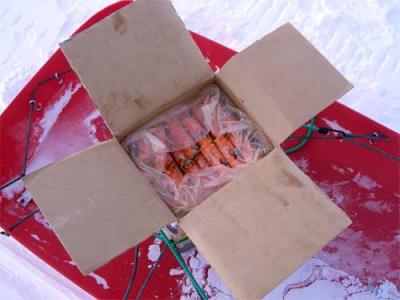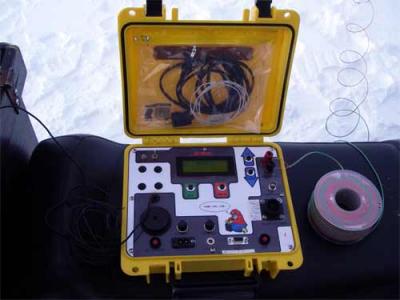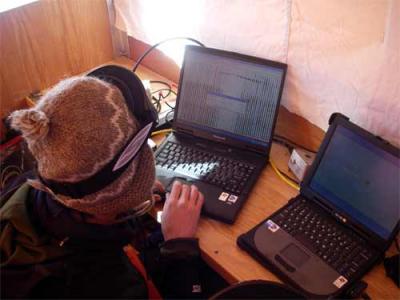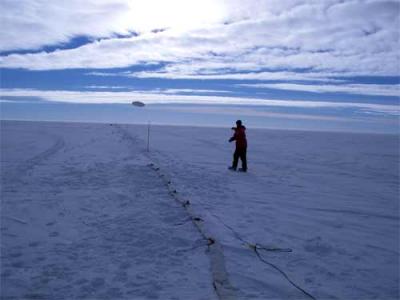Location: About 20 meters to the NW of WAIS
So today was supposed to be my last day at WAIS, much like December 19 and 20. Once again weather was playing a factor, just messing with my head a little bit more. At least with the first two flights they were canceled long before I had started any packing. Not so much today. I took down the cot in the tent and packed up on my sleep kit items. It was time to go! About an hour before the flight was supposed to come in, a big CNX was written on the main camp board, CANCELED! Again. So what did I do? I took a shower!!!!! And shaved! The first of either since we left McMurdo eleven days ago. And now I smell pretty again. The clothes still smell a bit, but I smell pretty! Everyone else’s clothes smell a bit though too, so I fit in just fine!
The past two days have been spent digging out from the worst storm here since this became a field camp three years ago. We also were finally able to take some data yesterday. By taking data, yes, that means we got to blow up some snow!
Explosives!
 The picture says it all.*
The picture says it all.*
We first started by taking a look at some surface data. This is where we find snow. Below the snow, some 20-30 meters on average, we move into an area of fern. This is snow that has been packed together, become denser but has not turned into ice. Below the fern, around 80 meters or so we find ice. As the composition of the material changes so do its physical properties. We have specifically been looking at the velocity of waves through the different materials and taking measurements of the time it takes for the wave to reach the 48 different geo-rods after the explosion. Once we have the time we can then use that information to help locate and characterize the bedrock below.
Detonator Box
 This is where the signal to detonate the explosives comes from.*
This is where the signal to detonate the explosives comes from.*
DATA!
 Some of the initial data registered by the computers.*
Some of the initial data registered by the computers.*
After each shot the real fun begins! We get to move the 960 meters of cable and the 48 geo-rods. All 48 of them have to be in the correct order so this moves takes a bit, moving each of the four pieces of cable one at a time. Once the cables have been moved, we can match up the geo-rods and replant them into the snow. This whole process between shots takes about an hour and a half, and then about 30 seconds for the shot and the computer to register the data. Sound like fun? It all moves relatively fast when all six of us are working on something to get the next shot ready to go. We take the shot, and the process repeats itself. We completed three shots last night and have two more to do tonight. Why didn’t we get them all done in one night?
The weather as you have read about has put us a bit behind schedule. Not to mention the fact that any ground movement, including walking around or in some cases, blowing snow, can provide background noise in the data. We don’t want that. We started taking data around 8pm last evening and took our last of three shots a few minutes before midnight! These are the kinds of days you get when trying to play catch up. The time of day doesn’t really matter though as it is light 24/7!
We are having a bit of fun down here too. In some free time we were able to get the Frisbee out and make a couple tosses.
Some Fun!
 Tossing the Frisbee around in between shots on the firing line.*
Tossing the Frisbee around in between shots on the firing line.*
On the schedule for today are the last two shots on the explosives line and to put together radar to some imaging of the sub-surface. More to come on all this. There is another flight scheduled for tomorrow. Wish me luck on the return to McMurdo, if this flight gets canceled I won’t have another chance until at least next Friday.
Happy Holidays!

